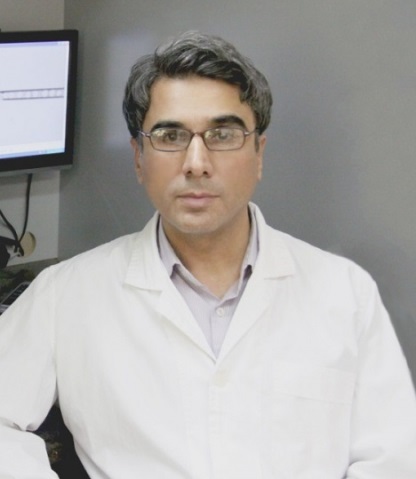Andrology and Embryology Research Group
In the mid-nineteenth century, scientists proposed that sperm and egg as independent single-celled organisms are alive, the explanations quite similar to current concepts.
Shortly afterwards, the role of these two sex cells in the formation of the zygote (Fertilized egg) and embryo was determined.
Later in the middle of the twentieth century, with the emergence of a common field of interest in understanding the mechanism and pathogenesis of some conditions and diseases that limit and damage the male reproductive power, researchers converged on a common and centralized ideology and the term andrology in the modern sense had been developed.
The term gradually evolved with the contribution of various scientists from biological sciences, genetics and even psychologists, and it was transformed into a dynamic and extensive scientific context in which, using various technologies, the reproductive health of the male sex during life (Birth, puberty, and even old age) was investigated and reproductive health and quality of life of infertile or at-risk individuals were promoted.
Since the production of healthy sperm as a male sex cell is one of the most important criteria for reproductive health, today, in addition to studying anatomical, hormonal, and structural disorders in reproductive organs, molecular and functional evaluations of sperm play an important role in measuring male reproductive health.
At present, most portion of the research in andrology laboratories is dedicated to sperm quality assessments and semen analysis and the relationship between these parameters and fertility.
After the birth of the first baby from in vitro fertilization (IVF) called "test tube baby" in 1978 and the widespread use of assisted reproductive techniques (ARTs) and microinjection (ICSI), the importance of sperm quality and its effect on subsequent fertility, fetal health, and successful pregnancy became the core center of attention.
As of today, many researches are being done in order to determine the best indicators of sperm quality evaluation and the relationship between its physicochemical and even metastructure properties with embryological indicators.
Following the researchers' curiosity about understanding the mechanisms of fertilization, embryonic stages and organ production, the molecular dimensions of fetal growth and development became critical concepts and its development led to the formation of modern embryology.
In this way, providing the context for production, growth, maintenance, and even manipulation of embryos outside the body in the laboratory led to the extraordinary spread of this science in various dimensions including cloning, transgenic animals, and embryonic and adult stem cells.
In recent years, interdisciplinary knowledge in this field has tremendously expanded, which has delineated new therapeutic horizons for this science by introduction of new technologies including cell therapy.
Avicenna Research Institute (ARI), with its hardware infrastructure and efficient and mighty manpower team, has launched the Embryology and Andrology Research Group as one of the main pivotal cores in Reproductive Biotechnology Research Center.
Researchers in this group, by conducting basic, applied, and clinical research on molecular mechanisms of fertilization, embryonic development, and environmental factors influencing efficiency of reproductive system and human fertility, try to develop and promote methods of assisted reproductive techniques and thereby preserving fertility.
The experienced researchers of this group try to improve the methods of selecting the best gametes for use in assisted reproductive methods by examining the laboratory maturation conditions of gametes through different methods and treatments.
For this purpose, extensive research on spermatogenesis, the effects of laboratory interventions on sperm parameters and molecular mechanism of fertilization are in the record and profile of this research group.
Moreover, the researchers of this group have taken initiatives in maintaining the fertility of children and adults at risk of infertility, such as cancer patients undergoing chemotherapy and radiation therapy, by gaining the technical knowledge of culturing and transplanting testicular stem cells and freezing gonadal tissues.
Following these successes, the establishment of a reproductive tissue bank as a practical outcome of this group at Avicenna Fertility Center manifests the resolution and commitment of Avicenna Research Institute (ARI) in designing and conducting applied research with the ultimate goals of ameliorating and promoting the health of individuals in society.
Efforts to produce cloned and transgenic animals as bioreactors for the production of biological and pharmaceutical products, as well as applied research on the differentiation and development of clinical applications of embryonic and adult stem cells are other research targets of this group.
This group has a cohesive relationship with the Embryology and Andrology department of Avicenna Fertility Center, and part of the group's activities is focused on expanding and promoting services that can be provided to infertile couples.
The area and type of Group’s activities:
Research activities:
- Use of assisted reproductive techniques in humans and animals with the aim of improving reproductive success and efficiency
- Culture and transplantation of testicular and ovarian stem cells
- Production of simulated, genetically engineered, and transgenic animals as bioreactors for the production of biological products
- Recognition and modification of effective factors in order to improve the vitality of simulated embryos
- Detection and epigenetic modifications necessary for the growth and development of embryos produced in vitro (Especially transgenic simulated embryos)
- Preparation of germ and embryonic cell bank in humans and animals (For commercial and research purposes)
- Conservation of endangered animal species
- Establishment of cell lines of embryonic stem cell origin (In farm and laboratory animals)
- Production of knockout and knockin mice
- Conducting applied studies in the field of stem cells
Educational activities:
- Holding codified courses as training workshops
- Implementing theses and dissertations (Both master and doctoral)
- Carrying out joint research projects in collaboration with other research centers
Group members:
- Dr. Mohammad Mehdi Naderi
- Dr. Naser Amirjannati
- Dr. Mahnaz Heidari
- Dr. Mohammad Reza Sadeghi

Dr. Abolfazl ShiraziHead of the Research Group
















